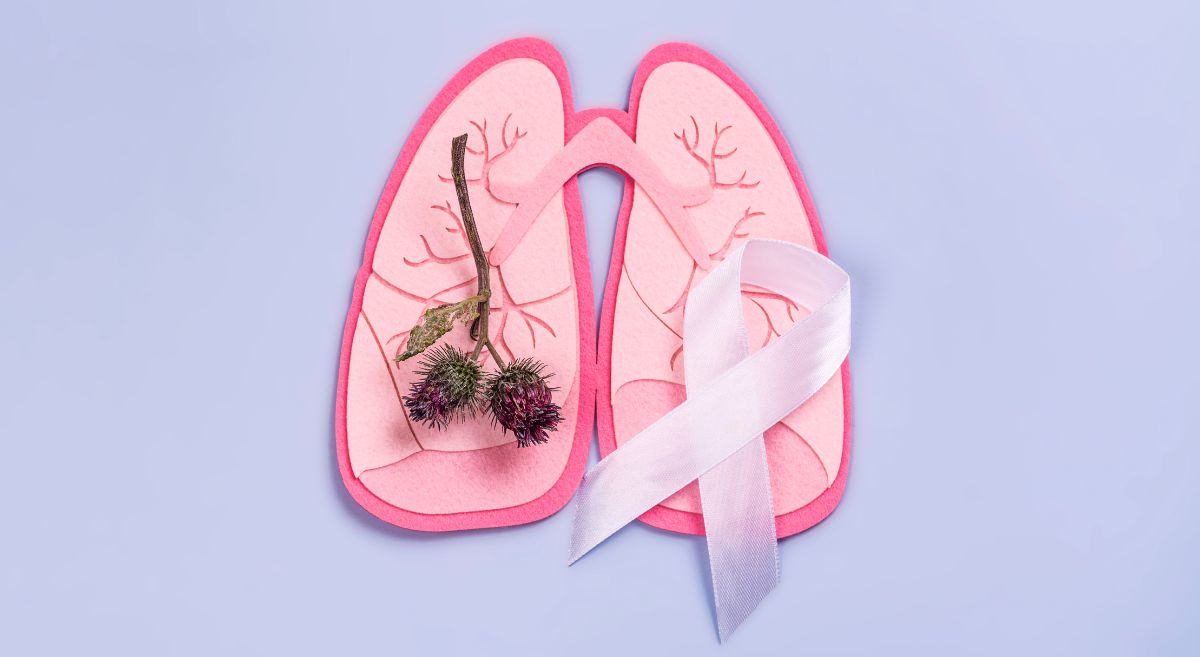Lung cancer is one of the most common cancers around the world and also one of the deadliest. It tends to go unnoticed until it gets to the advanced stage. Some cancers have visible signs early on which makes diagnosis easier. In the case of lung cancer, it is developed silently within the body making early detection challenging. In this blog we discuss the reasons why lung cancer happens and more importantly why it is difficult to detect it and how patients can ensure they are not late for the treatment.
Why does Lung Cancer remain undiagnosed?
The lung cancer may remain undetected due to the following reasons:
1. No Early Signs
Lung cancer is usually asymptomatic during its early stages, making its early detection very difficult. There are very few pain receptors in the lungs, and therefore, the tumour grows considerably before causing any pain. Many people remain ignorant of the disease until it has already spread.
2. Symptoms Mimic Common Illnesses
When symptoms do occur, they often resemble more common respiratory disease presentations and include bronchitis, asthma, or COPD, thus wrongly leading patients to miss appointments or periods of diagnosis. Common mistaken symptoms include the following:
- Cough
- Shortness of breath
- Fatigue
- Pain in the chest
- Wheezing
- Hoarseness
- Frequent episodes of respiratory infections
3. Slow Disease Progression in Some Cases
Most adenocarcinomas grow at a slow pace, and consequently, the signs of this particular cancer may manifest very late into the disease or not at all. This therefore enables the time when the diseases advance before getting diagnosed.
4. Lack Of Routine Screening in At-risk Individuals
Unlike breast or cervical cancer, lung cancer does not have widespread early screening programs, except for high-risk individuals such as heavy smokers. Many people who do not meet the screening criteria remain undiagnosed until the disease has advanced.
5. Stigma and Delayed Medical Attention
Lung cancer is linked to smoking, and the disease is stigmatized. Patients who are not smokers and are diagnosed with lung cancer do not think they are at risk, and hence they delay going to the doctor when symptoms appear. Some smokers are also afraid or guilty of visiting a doctor.
Who is at Risk?
Knowledge of the risk factors will help people be more alert about their lung health. These individuals are at higher risk of Lung Cancer:
1. Smoking: The main cause of lung cancer is cigarette smoking, which accounts for 85% of cases. The risk is proportionate to the number of cigarettes smoked and the duration of smoking.
2. Exposure to Secondhand Smoke: Exposure to secondhand smoke regularly increases the risk of developing lung cancer by a significant factor in non-smokers compared to those who are not exposed.
3. Occupational Exposure to Carcinogens: People who work in industries that involve asbestos, radon, diesel exhaust, and certain chemicals are at a higher risk of developing lung cancer. Miners, construction workers, and factory workers are at risk.
4. Air Pollution: Long-term exposure to air pollution, including fine particulate matter and toxins from vehicle emissions and industrial waste, can contribute to the development of lung cancer.
5. Genetic Factors: A history of lung cancer in relatives raises one's likelihood of developing the disease, even among non-smokers.
6. Exposure to high levels of radiation: Either due to frequent radiation therapy or living in areas with high levels of radon gas enhances the predisposition
Common Misdiagnoses of Lung Cancer
Lung cancer often shares symptoms with other diseases affecting the respiratory system; hence, it is most likely misdiagnosed as:
- Chronic bronchitis: Persistent cough and mucus production can be ascribed to bronchitis instead of cancer.
- Asthma: Shortness of breath and wheezing may be confused with asthma.
- Pneumonia: Lung infections may cause chest pain and fever, and the doctors may misinterpret the symptoms.
- Tuberculosis (TB): Chronic cough and fatigue are also symptoms of TB, thus delaying the diagnosis of cancer.
How to Improve Early Detection?
1. Regular Screening for High-Risk Individuals
Low dose computed tomography (LDCT) scans are recommended for high-risk individuals, particularly those over 50 with a history of smoking. Regular screening can detect lung cancer at an earlier, more treatable stage.
2. Paying Attention to Persistent Symptoms
If symptoms such as a chronic cough, shortness of breath, or chest pain last for more than three weeks, it is essential to seek medical evaluation.
3. Raising Awareness Among Non-Smokers
While smoking is a major risk factor, nearly 15-20% of lung cancer cases occur in non-smokers. People with no history of smoking should also be aware of symptoms and risk factors.
4. Improving Diagnostic Tools
Advances in medical imaging, artificial intelligence, and molecular testing are helping doctors detect lung cancer more accurately. Investing in better diagnostic techniques can lead to earlier detection.
5. Avoiding Delayed Medical Consultation
Ignoring symptoms or assuming they are minor can delay diagnosis. People experiencing persistent respiratory issues should not hesitate to consult a doctor, even if they do not have known risk factors.
In conclusion, lung cancer is barely detected until it is at an advanced stage. Due to it going unnoticed and the fact that it shares signs and symptoms of respiratory issues is concerning because there are inadequate preventive methods for the public. It is important to identify the risk factors, notice unusual symptoms, or change the screening strategy for more accurate results. One way to achieve this is for everyone regardless of if you are a smoker or not to ignore issues related to their lungs and seek medical intervention when necessary. As the old saying goes, “Prevention is better than cure”, so be proactive and consult a doctor if you feel any of the symptoms.
